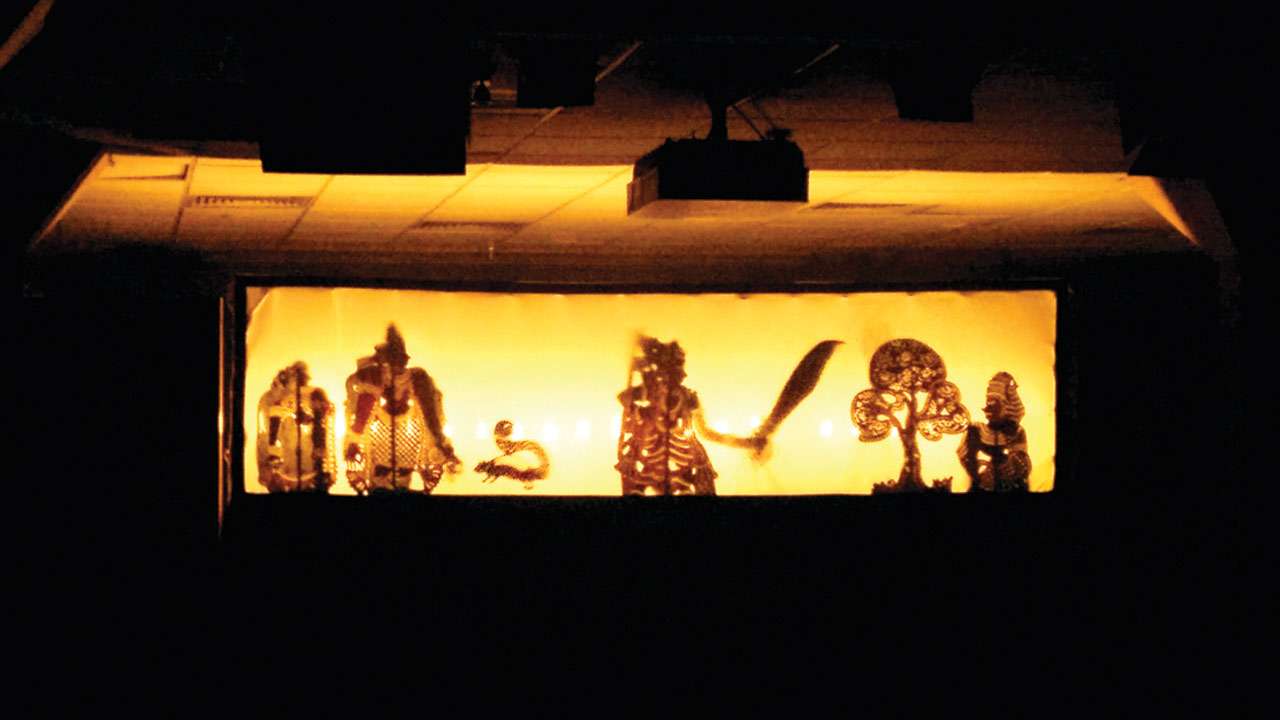

There is today a lot of competition from other forms of shadow plays – movies, television, YouTube clips. The art is well documented in museums, and it is commonly performed for tourists, but it is rather more uncertain whether it will survive as a genuinely popular form of entertainment. There is concern regarding the future of shadow puppetry. The shadows are cast using oil or halogen lights onto a cotton cloth background. Here too the performances are staged during temple festivals and story-lines from Indian epics are common. As the popularity of this form of puppetry moved through Asia to the Indian subcontinent and farther westward, the darker, silhouetted puppets became the vogue. Shadow puppets have been popular in Cambodia, Thailand, Laos and Malaysia too. There is clear evidence that puppet theater was present in ancient China, where puppets were elaborately carved and painted. A complete troupe of wayang kulit performers also includes singers and gamelan players – the gamelan is an ensemble of musicians who play various traditional percussion instruments. In Bali the performance typically starts a t night and continues until dawn. A skilled puppeteer can make the shadows walk, dance, fight, nod and laugh. The flat puppet s ha ve movable joints that are animated by using rods. It began 1,000s of years ago in China and India. I n Javanese, wa yang means “shadow,” “imagination” or “spirit,” and kulit means “skin” – the puppets here are usually made of leather. Shadow puppetry is considered the oldest form of puppetry in the world. In Indonesia it is known as wayang or wayang kulit, and is common in Java and Bali. Putra manages the on-site Wayang Shadow Puppet Theatre where you can catch authentic Balinese Shadow Puppet shows at 20:00 / 8.00 pm every Wednesday. This tradition has been picked up all over Southeast Asia. Sometimes the shows are performed by families of itinerant puppeteers. The shows are usually staged during Hindu festivals and stories drawn from Indian epics feature prominently. Shadow puppets have a long history in India and different parts of the sub-continent have their own versions of the art. It spreads knowledge, promotes cultural values and entertains the community, especially the youth.One of the arts spread through the indianization of Southeast Asia is shadow puppetry. Chinese shadow puppetry also passes on information such as cultural history, social beliefs, oral traditions and local customs. Considered an irreplaceable and intangible source of cultural heritage. The relevant skills are handed down in families, in troupes, and from master to pupil. Combined with music, singing and storytelling, shadow puppetry embodies Chinese folklore.

Some puppeteers are professional, while others are amateurs performing during slack farming seasons. Shadow plays are performed by large troupes with seven to nine performers and smaller troupes of only two to five, primarily for entertainment or religious rituals, weddings and funerals and other special occasions. Many puppeteers also carve the puppets, which can have between twelve and twenty-four moveable joints. They master special techniques such as improvisational singing, falsetto, simultaneous manipulation of several puppets, and the ability to play various musical instruments. Many elder shadow puppetry artists can perform dozens of traditional plays, which are orally transmitted or found in written form. Manipulated by puppeteers using rods, the figures create the illusion of moving images on a translucent cloth screen illuminated from behind.

© China Puppet and Shadow Art Society, 2009Ĭhinese shadow puppetry is a form of theatre acted by colourful silhouette figures made from leather or paper, accompanied by music and singing. Shadow puppetry is considered the oldest form of puppetry in the world.


 0 kommentar(er)
0 kommentar(er)
